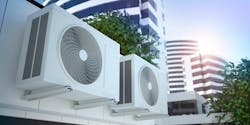US$47 Million to Improve Energy Efficiency of Buildings
The U.S. Department of Energy (DOE) has recently announced funding opportunity of up to US$47 million for the development of innovative technologies that will help make buildings more energy-efficient.
Residential and commercial buildings account for approximately 40% of the total energy demand and about 75% of all electricity use in the United States. This at a time when electrical grids are facing challenges because of growing peak electricity demands, transmission and distribution infrastructure constraints and the increasing number of variable renewable power generation sources.
Integration of more flexible and even dispatchable loads through building automation can optimize energy use, leading to decreased energy costs while maintaining occupant preferences. Even greater optimization of energy supply, storage and demand will result in a more resilient and reliable grid that improves energy affordability.
The DOE’s Building Technologies Office (BTO) designed the Buildings Energy Efficiency Frontiers & Innovation Technologies (BENEFIT) 2019 Funding Opportunity (FOA) to increase energy productivity by supporting the R&D and performance verification of flexible and energy-efficient technologies for residential and commercial buildings across the following topic areas:
- Flexible Buildings Technologies: This topic supports early-stage R&D that integrates advanced sensing, controls and communication with flexible, energy-efficiency technologies to advance the role buildings can play in the modernizing power grid. The subtopics include cybersecurity through adaptive building controls, performance verification for flexible building loads, advanced actuators and thermal energy storage.
- Heating, Ventilation and Air Conditioning Technologies: This topic supports the development of highly efficient technologies for thermal end-uses in buildings, including space conditioning, water-heating and refrigeration. Subtopics include non-vapor compression heating, ventilation and air conditioning (HVAC) technologies and fuel-driven building equipment.
- Solid-state Lighting Technologies: This topic supports the development of highly efficient lighting technologies and systems to improve lighting energy efficiency. The subtopics address the green gap and droop in LEDs, quantum dot optical down-converters, stable and efficient white OLEDs, light extraction and utilization for OLEDs, and advanced lighting systems.
BTO’s demand flexibility strategy, called Grid-interactive Efficient Buildings, is an addition to this funding opportunity, which has traditionally focused on R&D for the next-generation of energy-efficient building technologies.
Buildings have historically been passive consumers of energy, but next-generation flexible technologies give buildings and equipment the potential to provide a host of grid services that utilities currently receive from other, more traditional grid assets. Further research will help achieve this vision at-scale.
For more information on this FOA please visit here.
For more information on the Office of Energy Efficiency and Renewable Energy’s Building Technologies Office visit their website.
